Rugs with solid and vibrant colours remain attractive works of art
In antique oriental rugs, the colour employed in a carpet is typically a crucial element in identifying its maker. Factors aiding an expert in determining an antique rug’s origin include the type of knot (the primary factor), the materials used (wool, cotton, or silk), and the colour composition. An antique rug’s characteristics reflect a people’s thought process and how the artist’s imagination and creativity are expressed through colour choice.
For instance, a key characteristic of Caucasian rugs is the artist’s ability to perfectly combine strong, saturated, and intense colours. The art lies in employing various robust colours in a single carpet, resulting in a harmonious explosion of colours. Contrary to what one might think, it’s not the use of several intense colours in the exact rug that causes visual discomfort, but rather the lack of skill in combining them. Caucasian weavers were masters of this art.
All oriental rugs woven before 1875 possess a harmony of colours, regardless of whether they are soft or bold tones. Pieces made after this period, particularly after the 1920s, represent imitations, sometimes surprising, sometimes shocking, of a unique era of artistic production that has passed. With an antique rug’s wear, chemical washing attempts to achieve a similar aesthetic, charm, and attractive patina. Although this process softens the most glaring colours, it replaces one problem with another. Throughout art history, there have always been periods when artists produced masterpieces that could not be replicated. They can be copied, but mere copies cannot offer the observer the same pleasure as the original piece.
It should be emphasised that the seller should always refrain from tempting a rug collector to acquire a replica, even if the piece is aesthetically accurate. Among other indications, the colour, in particular, exposes a replica. The colours of a genuine antique rug are so translucent that it gives the visual effect of the piece seeming to rise from the floor, and the observer is fascinated by its irresistible charm. On the other hand, the colours of a rug replica are opaque, the wool is lifeless, and a veil covers the piece. If the observer has to stop and think whether the piece is genuine or a replica, then the likelihood is that it’s a replica. The authentic antique rug speaks to the admirer and leaves no room for doubt.
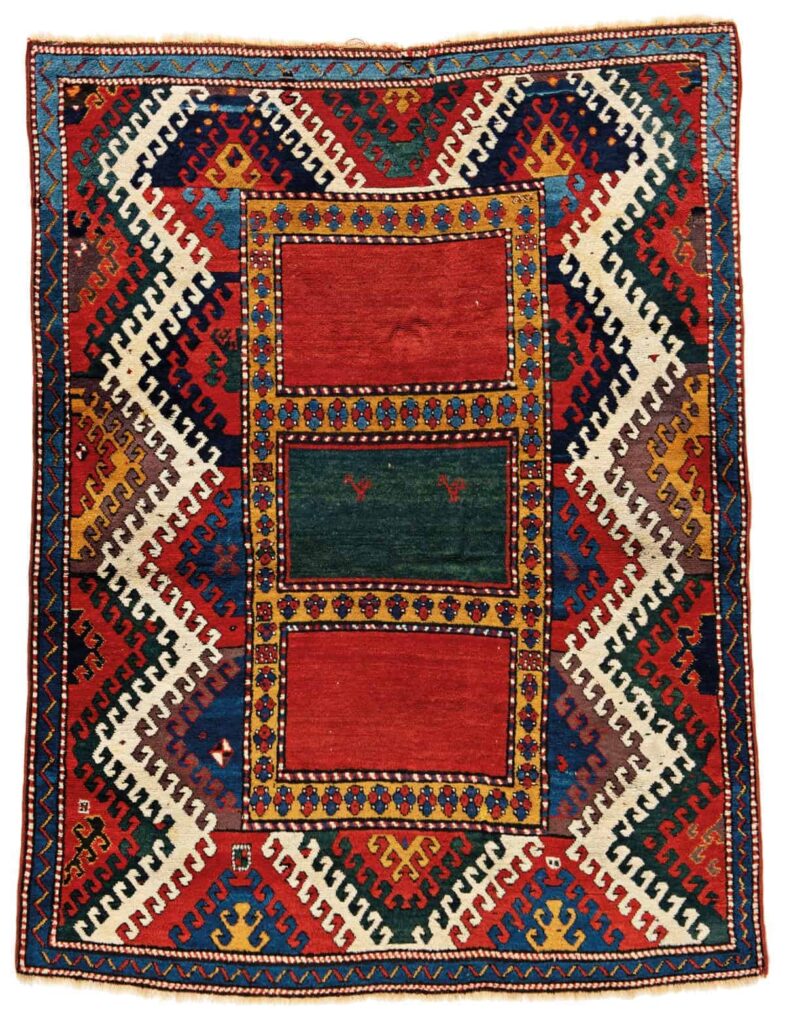
Bordjalou Kazak, 1875
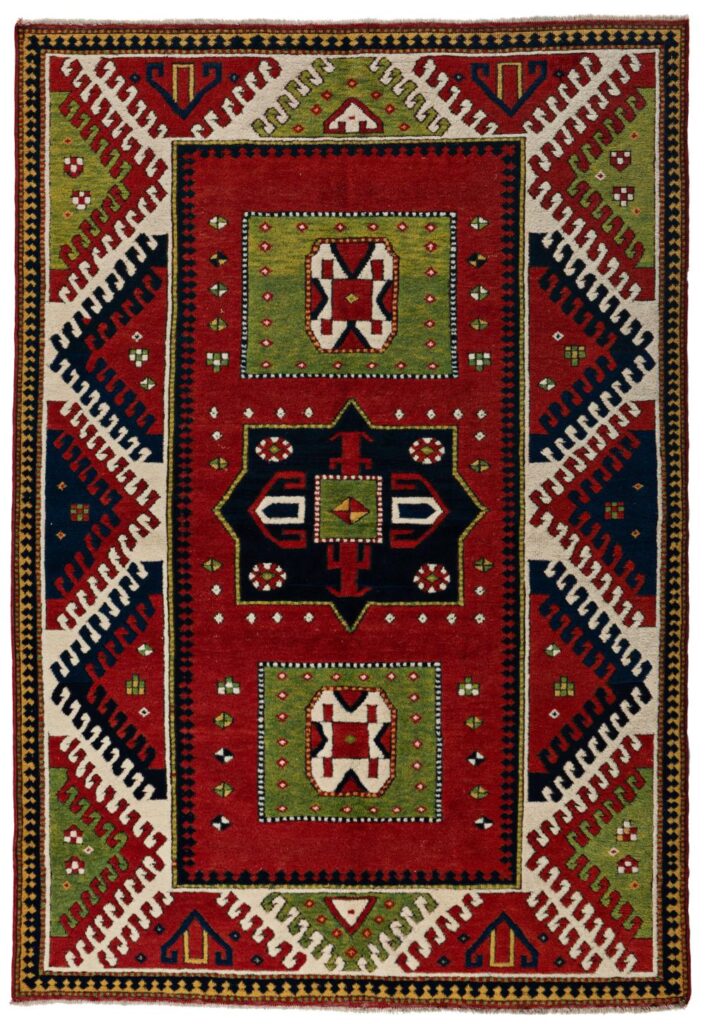
Replica of Bordjalou Kazak
While Caucasian rugs, with their vibrant colours, take the top spot for colour boldness, Anatolian or Turkish rugs come closest. The contrast of red and blue with the addition of a clear, bright yellow defines the colour scale of antique Turkish rugs. It’s unsurprising that Caucasian rug collectors often also collect Turkish rugs.
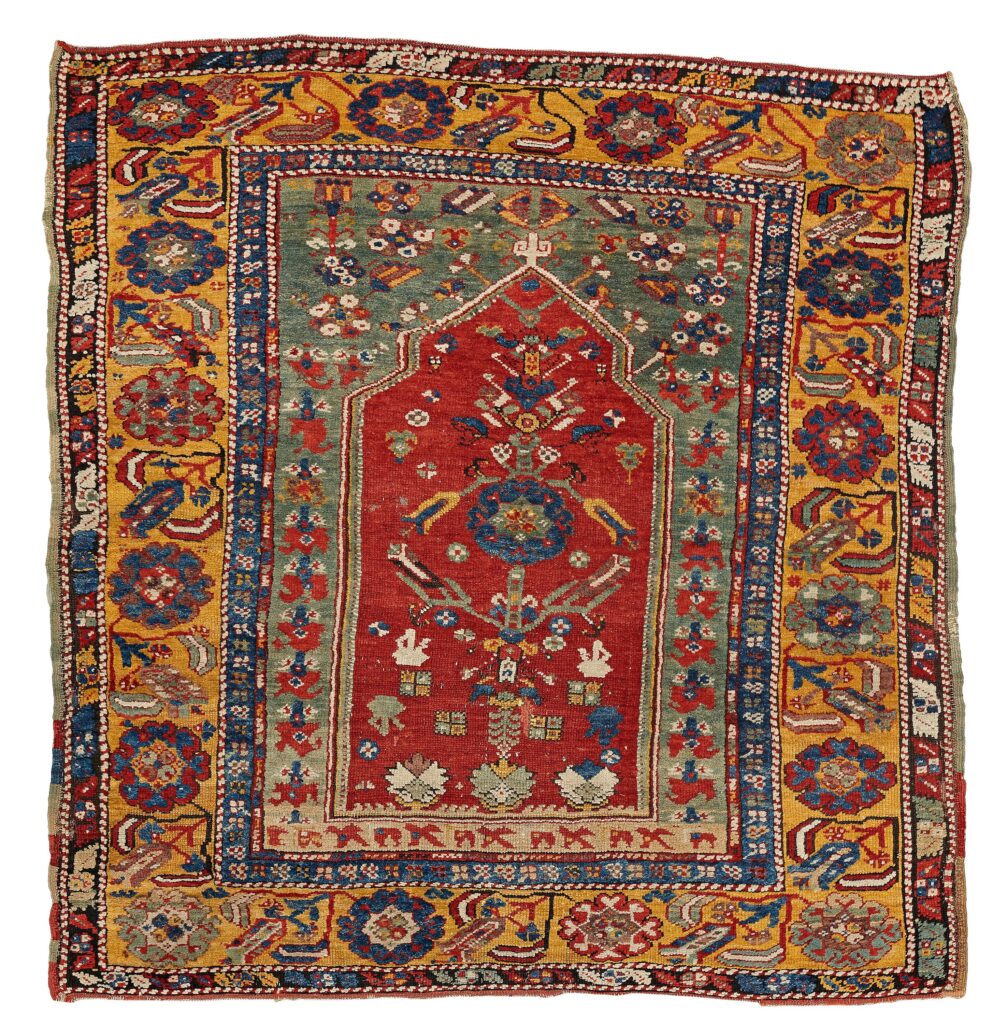
Konya Ladik, 1875
Antique Persian rugs, on the other hand, possess an endless richness of colours and shades. Instead of using contrasting colours, Persian artists chose to employ a harmonious gradation of colours carefully. This aesthetic sophistication makes antique Persian rugs extremely attractive and allows greater flexibility for placement in modern interiors. Unlike Caucasian rugs that attract admiration for their robust colours, Persian rugs confer elegance based on a high range of close tones.
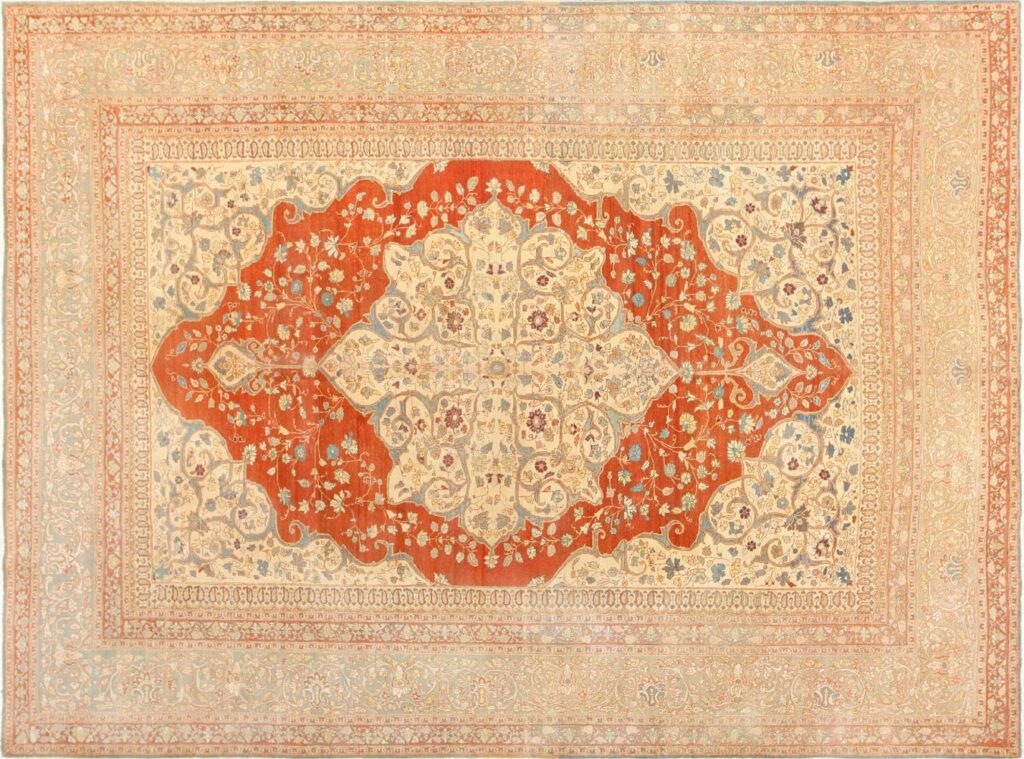
Tabriz Hadji Jallili, 1920
Unlike rugs with strong colour contrasts, there are rugs with subtle colour contrasts. Here, the art lies in producing an artistic effect using the minimum possible colours. It is especially the case with antique Turkmen rugs made in the region of Turkmenistan and Afghanistan, as well as parts of northern Persia, where the colour range is dominated by an infinite variation of reds contrasting with a dark blue. Turkmen rugs are the best demonstration of how it’s possible to produce a colourful, attractive, and artistically satisfying work of art with minimal colour use.
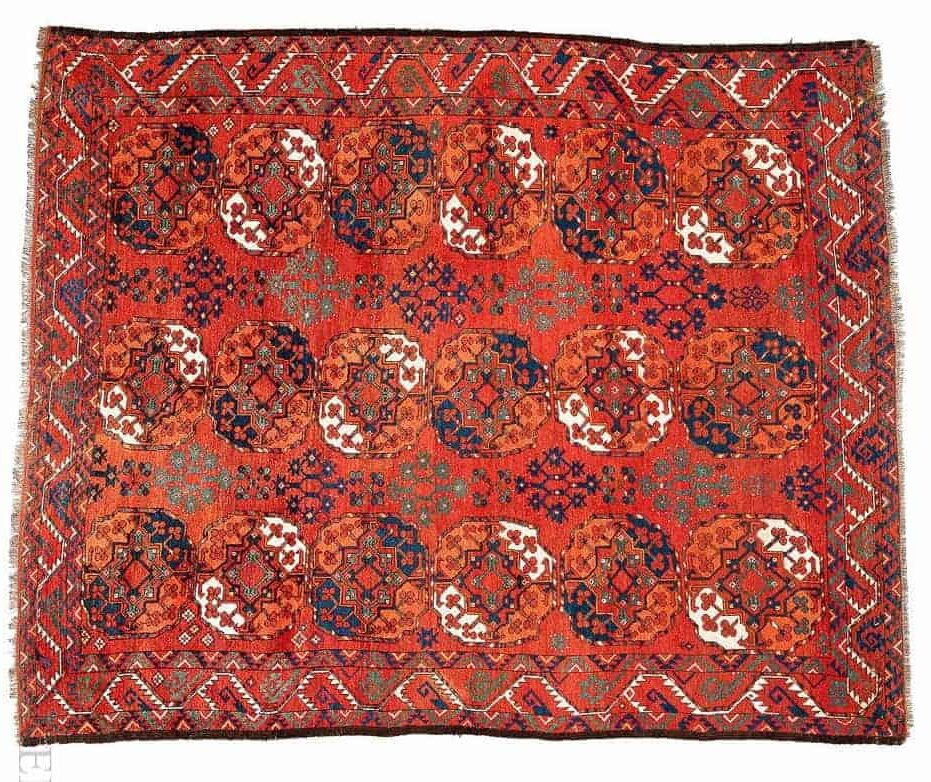
Ersari, 1870
India created its repertoire between ancient Persia with all its colour richness and Turkmenistan with its subtle and minimalist colour composition. In the early 16th century, the Mughal Empire’s rulers introduced Persian weaving art to their country’s court. Over a century, India developed a distinct and unique colour range, the most striking feature of which is a robust and bright cherry tone. This essential shade is contrasted by the design of trellis-shaped bushes full of realistic-style flowers in green, yellow, and blue tones.
A common characteristic of all antique oriental rugs, whether they have bolder or subtler colours, is the charm they exert on us. This charm can be understood if we realise that each rug colour, which at first glance seems to be a single colour, is composed of many colours and shades of the same primary colour. Each square centimetre contains variations of the same shade due to differences in wool quality and thickness and distinct dyeing methods. Even the most experienced dyer can only dye one skein of wool in a different colour. It’s precisely these delicate differences between shades that give a unique life and charm to a rug. If that same antique rug that attracts your eyes were dyed with equal and constant colours and the wool used was mechanically spun, the visual effect would be at least opaque, lifeless, and dull. It would be similar to the machine-made rugs that hit the market after the 1920s as copies of the antique oriental rugs of yesteryears.

Figalli Oriental Rugs
We do not sell rugs. We bring rare works of art to your home in the form of rugs.
Our services
You are Protected
Copyright © 2023 Figalli Oriental Rugs, All rights reserved. Desenvolvido por Agência DLB – Agência de Marketing Digital em Porto Alegre
